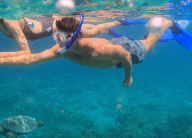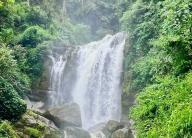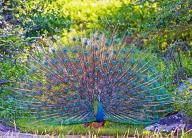There are around 90 species of whales, dolphins and porpoises, known collectively as "cetaceans". Whales are divided into two suborders: baleen and toothed whales. Baleen whales have a comb-like fringe, called a baleen, on the upper jaw, which is used to filter plankton, as well as small fish and crustaceans and they are the largest species of whale. Toothed whales have teeth and prey on fish, squid, other whales and marine mammals and sense their surrounding environment through echolocation.
Like all mammals, whales breathe air into lungs, are warm-blooded, feed their young milk and have some (although very little) hair. Their bodies resemble the streamlined form of a fish, while the forelimbs or flippers are paddle-shaped. The tail fins, or flukes, enable whales to propel themselves through the water. Most species of whale have a fin on their backs known as a dorsal fin.
Beneath the skin lies a layer of fat called blubber. It serves as an energy reservoir and also as insulation. Whales breathe through blowholes, located on the top of the head so the animal can remain submerged. Baleen whales have two blowholes,while toothed whales have one.
With so much diversity within the whale family and the grace in which they move in the water, whatever their, size, Whale and Dolphin experiences really are something that should not be missed out on when visiting a place with these beautiful animals.











